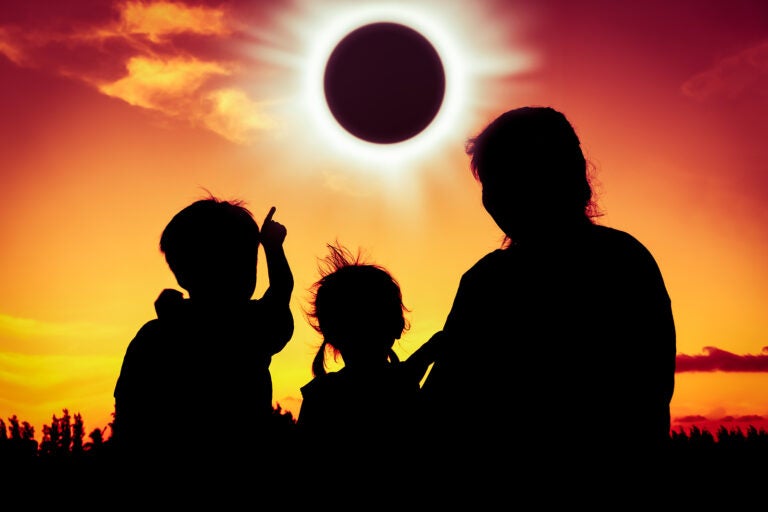Chasing the Eclipse
We look into the history of eclipses and what scientists are hoping to learn.
Listen 48:29
Silhouette back view of family sitting and relaxing together. Boy point to solar eclipse on gold sky background. Happy family spending time together. Outdoor.
On April 8, a swath of North America will be treated to a rare and spectacular sight — a total solar eclipse; in some places, the first in more than a century, and the last for at least another 20 years. The path of totality, where it’s possible to see the moon completely block out the sun, stretches in a narrow ribbon from Mexico, through Texas, all the way to Maine.
It’s an event that eclipse chasers have been anticipating for years. On this special episode, we find out why so many people call total solar eclipses a life-changing experience, and why they will go to great lengths to witness this fleeting spectacle of nature. We’ll hear what scientists are hoping to learn during this brief but important moment, and we’ll pay tribute to the celestial body that makes the eclipse possible: the moon.
ALSO HEARD:
- In 1998, science journalist David Baron found himself standing on a beach in Aruba, staring up at the sky, where a silvery wreath of fire burned, flanked by a glowing line of planets. It was his first total solar eclipse — and an event that changed his life. He joins us to talk about eclipse-chasing, and his book “American Eclipse.”
- Reporter Andrew Stelzer tells the cautionary story of his cousin, who found out the hard way why eye protection is essential for viewing eclipses.
- Solar eclipses aren’t just marvels of nature — they’re opportunities for scientists to study things they can’t capture at any other time. Reporter Alan Yu explains why one group of researchers is going out of their way to collect important measurements during this rare event, and how it could help lead to better weather forecasts.
- Science writer Rebecca Boyle schools us on the celestial body that makes the upcoming eclipse possible — the moon! Her new book is “Our Moon: How Earth’s Celestial Companion Transformed the Planet, Guided Evolution, and Made Us Who We Are.”
WHYY is your source for fact-based, in-depth journalism and information. As a nonprofit organization, we rely on financial support from readers like you. Please give today.






